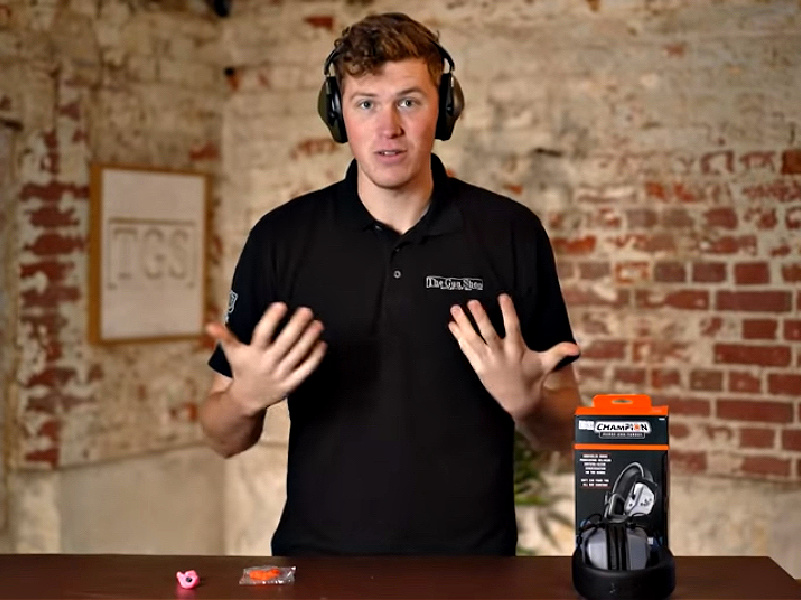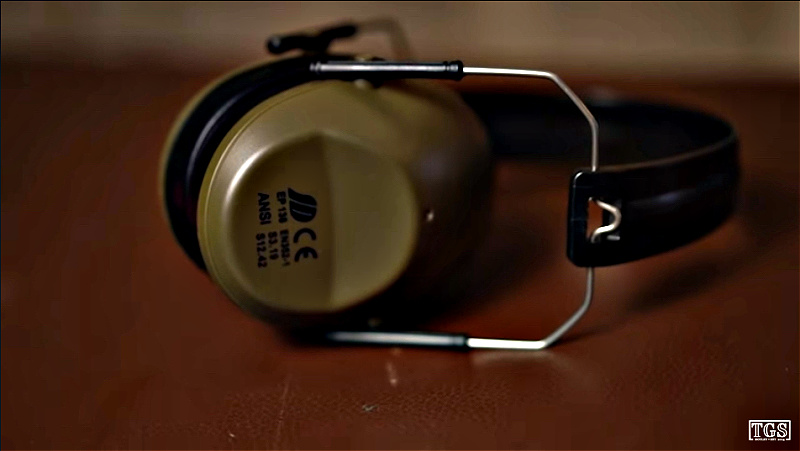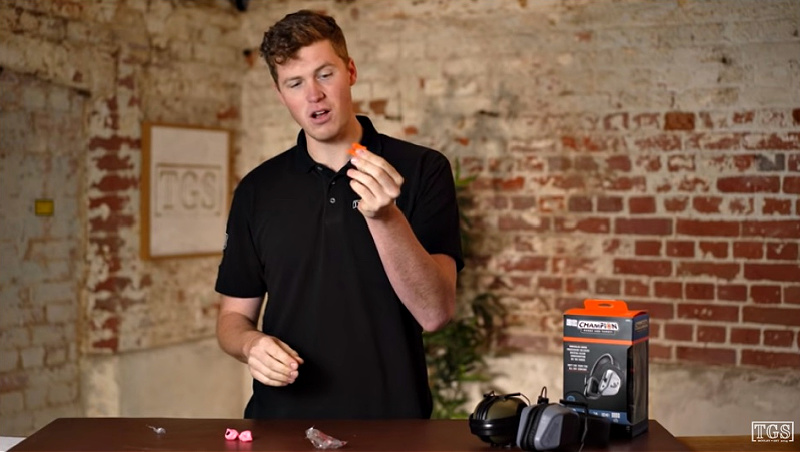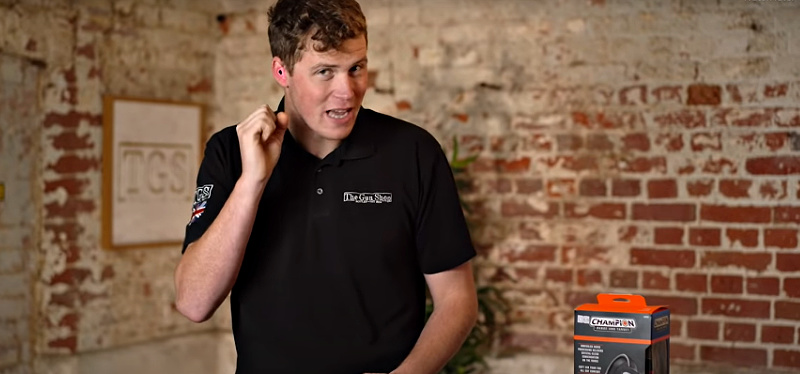Ear protection is a non-negotiable when it comes to shooting. Or at least it should be. With many different options available, which is the right one to choose? TGS Outdoors took on this topic and gave some quick feedback on the positives and negatives of the major kinds.

With the exclusion of suppressors, the three major kinds of ear protection are over-the-ear muffs, squish earplugs, and custom silicon plugs. Here’s the TGS Video.
We’ll break down the options as they laid them out.
1. Over-the-Ear Muffs

Both standard passive and electronic muffs fall into this category.
Are there benefits to over-the-ear muffs?
Yes. They’re easy to fit and one size fits most everyone. Any idiot can put them on, seal them down, and get a good fit. They’re also great in the cold. However, wearing them over clothing during the winter greatly reduces their effectiveness. TGS recommends wearing them under clothing (like hats) in the winter.
They’re more hygienic than squish plugs. TGS recommends cleaning them between people and you should bring a pack of wipes in your range pack to clean them off as they can get pretty nasty. Also, you can replace the hygiene kit that includes the foam by ear and the internal foam.
And the negatives?
There are some negative points about over-the-ear muffs. They’re really bad in the heat. If you use them on a hot day, you’ll get really hot with them on. Also, they offer less protection than in-the-ear models because there is no blockage in the ear canal (though you can wear both types if you want). As for durability, muffs require maintenance to keep them up to par. The foam will collapse over time, reducing ear protection. The headband will expand, too, decreasing the tension and reducing the seal on the ears.
There are some things to consider about over-the-ear muff effectiveness, too. Wearing over clothing or glasses reduces their effectiveness, and the size/shape of the muff and your gun could interfere with each other — think shooting prone with a rifle.
Which is better, passive muffs or electronic muffs?
Passive muffs generally give you better options and are less expensive, but the ability to hear your surroundings is far better in electronic muffs. You would need to invest in higher-end electronic muffs to get a better sound quality overall. Cheaper models tend to have a lot of white noise.
2. Ear Plugs
This category encompasses custom, flanged silicon type, and squish-fit plugs. These are obviously smaller and more compact than the muff option as well as less intrusive to the shooter.

What are the benefits of earplugs?
These offer better protection because they go in the ear canal and block sound. When they are installed correctly, they have a better and more consistent fit. They’re also smaller, easier to carry around, and easier to use with hats and glasses.
The drawbacks?
Specifically, when talking about the budget plugs ones, incorrect placement in the ear canal offers little to no help in hearing protection. Correct installation is key for these.
Also, hygiene is not the strong suit of plugs. But considering the budget ones are supposed to be single-use, it should not be an issue. If your hands aren’t clean when placing them, you’re adding nastiness to your ears. Ear infections are no joke.
And one last thing, silicon plugs can suffer with age, so if they’ve been sitting in your range bag for an extended time, you probably need to check and see if they need to be replaced.
3. Custom-Fit Ear Plugs
The gent at TGS talks specifically about the brand Custom Fit Guards.

What are the pros for custom-fit earplugs?
Since they are created from a mold of your ear, they fill the ear perfectly, offering better hearing protection than other plugs or muffs.
And the cons?
By filling your ear perfectly, they can feel extremely weird. They’re not easy to put in and take out, you have to get them seated just right for proper protection.
Custom plugs are definitely more costly than the other earplug options. And, as with other plugs, they will suffer and degrade with age.
This should help clear up the different options. Happy shooting!


